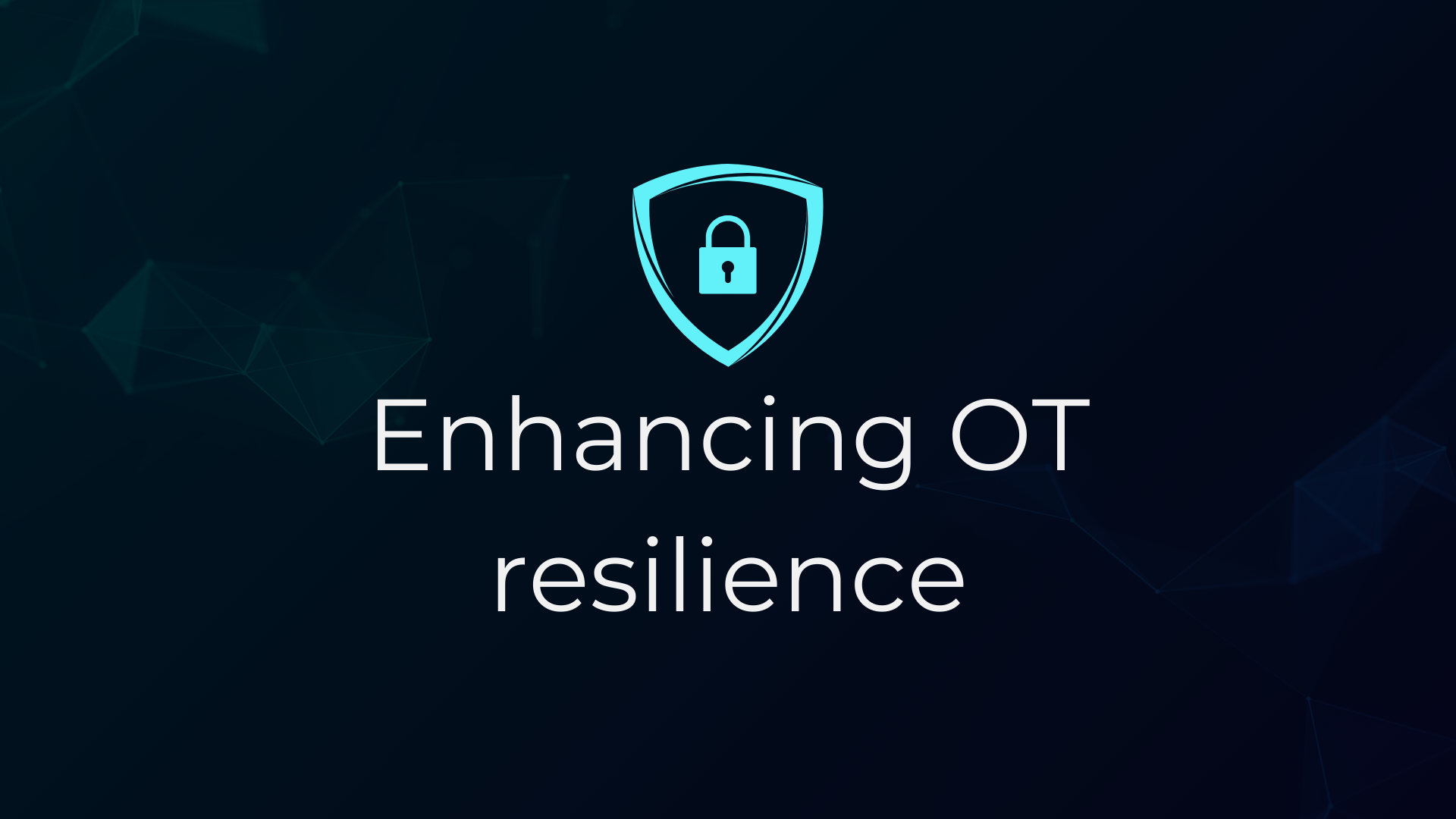Building a resilient digital future: enhancing OT resilience
Cyber Security • March 31, 2025 • Written by: Gareth Jones • Read time: 2 mins

As we look towards CYBERUK 2025, the theme of ‘Building a Resilient Digital Future’ resonates deeply with the challenges and opportunities facing our digital landscape. One critical aspect of this future is the resilience of Operational Technology (OT) systems, which are integral to the functioning of critical infrastructure such as energy, water supply, and transportation. Enhancing the resilience of these systems is not just a technical necessity but a strategic imperative for ensuring the stability, safety, and economic well-being of our societies.
The importance of OT resilience
OT systems manage essential services and are prime targets for cyber attacks that could result in severe disruptions. The burden of industrial cyber security costs often falls disproportionately on OT owners and operators rather than manufacturers, who have the greatest ability to improve the security of their products and reduce risk for their customers. Effective cyber security for these systems helps ensure the stability, safety, and economic well-being of nations.
Key considerations for enhancing OT resilience
The document "Secure by Demand: Priority Considerations for Operational Technology Owners and Operators" provides a comprehensive guide on how OT owners and operators can integrate security into their procurement process when purchasing industrial automation and control systems as well as other OT products. Here are some key considerations highlighted in the guide:
- Configuration management: Ensuring strong configuration management is crucial for validating changes to infrastructure and detecting unauthorised modifications. This includes authenticated backup recording, tamper prevention, and secure deployment of system configurations.
- Logging in the baseline product: Logging should be included in baseline OT products to preserve evidence of intrusions. This includes logging authentication events, configuration changes, and security events using open standard logging formats.
- Open standards: Utilising open standards enables interoperability and flexibility, allowing buyers to switch between vendors and leverage advances in security standards. This mitigates the risk of being trapped with unsupported hardware or software.
- Ownership: OT products should give owners and operators full autonomy over maintenance and changes, minimising dependency on vendors. This includes clear roles and responsibilities for system recovery and maintenance.
- Protection of data: Protecting the integrity and confidentiality of data is essential. This involves encrypting data at rest, verifying data integrity, and minimising access and sharing of OT data.
- Secure by default: OT products should be delivered secure out of the box, with security features enabled by default. This includes eliminating default passwords, using secure protocols, and embedding secure deployment guidance.
- Secure communications: Products should support authenticated communication with device certificates, simplifying the deployment and renewal of certificates to ensure secure machine-to-machine communications.
- Secure controls: OT products should be resilient to malicious commands and protect essential functions. This includes establishing trust for commands, preventing unsafe commands, and maintaining stability during security scans.
- Strong authentication: Implementing role-based access control (RBAC) and multifactor authentication (MFA) is crucial for limiting unauthorised access and ensuring identity and access management best practices.
- Threat modelling: A detailed threat model helps asset owners understand risks and prioritise security controls. This includes identifying attack vectors, implementing security measures, and maintaining up-to-date threat models.
- Vulnerability management: Manufacturers should have mature vulnerability management processes, including timely identification, documentation, and remediation of vulnerabilities. This also involves public disclosure of security updates and providing security advisories.
- Upgrade and patch tooling: Ensuring a well-documented and easy-to-follow patch and upgrade process is essential. This includes resilient patching features, verification of updates, and transparency about product support periods.
Methods: your partner in building a resilient digital future
Methods is an NCSC Assured Consultancy Company with extensive experience in the energy, automotive, and energy sectors. Our expertise in enhancing OT resilience is backed by our commitment to industry standards and best practices. We understand the unique challenges faced by OT owners and operators and offer tailored solutions to meet their specific needs.
By integrating security into the procurement process and prioritising key considerations such as configuration management, logging, open standards, and secure communications, Methods helps OT owners and operators mitigate current and emerging cyber threats. This not only protects critical infrastructure but also ensures the stability and safety of our societies.
As we move towards CYBERUK 2025, let us embrace these principles and work together to build a resilient digital future.
Hope to see you there!